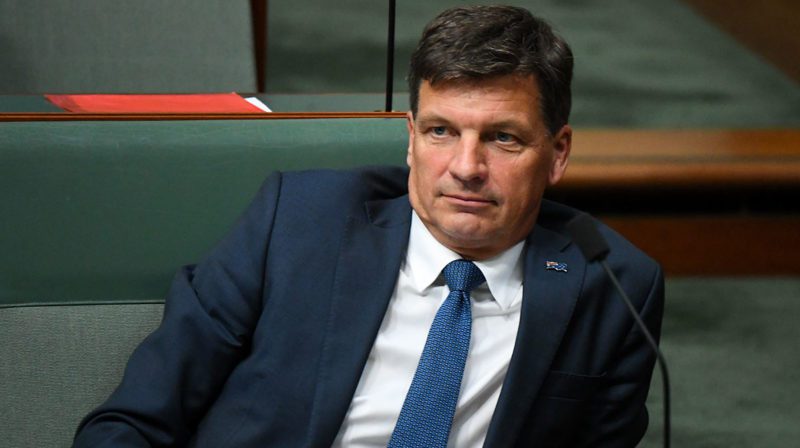The federal government’s “Future Fuels Strategy” discussion paper, which claims hybrid electric vehicles are greener than full battery EVs, is based on misleading modelling that must be corrected, says The Australia Institute.
In a submission to the Future Fuels paper, the progressive think tank described Australia as a “laggard” on EV policy, and savaged the Morrison government for putting forward no hard polices to support the uptake of EVs.
It said the government’s support for hybrids was based on “inflated” figures that collapse under scrutiny. It said hybrids had no place in a “future fuels” plan because they use old technology, and urged the government to adopt more aggressive incentives that would encourage the uptake of battery EVs.
“The Future Fuels Discussion Paper is not a strategy to drive uptake (despite one a strategy being promised in 2019), contains no new funding commitments and disappointingly rules out policies that work like purchase incentives for EVs, fleet procurement targets and vehicle CO2 standards,” it said.
“To justify the absence of EV incentives and subsidies, the Discussion Paper relies on modelling that claims to show EV subsidies are not value-for-money. However, this modelling is misleading,” it said.
“The Government’s rush job modelling is apparently for ‘illustrative purposes only’ and yet has been used by numerous federal ministers to claim that EV incentives do not represent value for money and justify this do-nothing approach to EVs. What is worse is that the modelling contradicts the Government’s own 2020 Emissions Projections, and specific comments made by the Treasurer when he was the Minister for Energy.”
It proposed including incentives that would reduce the cost of new EVs, CO2 emissions standards for internal combustion enging (ICE) vehicles, and committing to a 100 per cent electric government fleet by 2030 – all policies similar to those in place in comparable countries.
The policy proposals were in step with those put forward by the Electric Vehicles Council in its own submission, which also called for a date at which ICE vehicle sales would be phased out (it suggested 2030 or 2035 at the very latest), support for electrification of public transport, and a moratorium on the roll-out of road user charges for EVs such as the one due to come in force in Victoria this July. It also called for EVs to be exempt from Fringe Benefit Tax to encourage commercial fleet uptake.
The government’s Future Fuels discussion paper, released in February by Taylor, ruled out any hard policies that would go straight to the affordability of EVs. Instead, it focused on softer policies like improved charging infrastructure, integrating EVs into the grid, incorpartion of EVs into commercial fleets, improving information to consumers and businesses, and supporting innovation and manufacturing.
The absence of any hard incentives like tax breaks and CO2 emissions standards echoes the government’s broader climate policy, in particular its decisions not to renew the Renewable Energy Target and its refusal to consider carbon pricing. Even its support for hybrids, which have lower emissions than full ICE vehicles but can never be emissions free, echoes the government’s support for gas as a source of electricity generation on the grounds that it isn’t as polluting as coal.
The Future Fuels discussion paper claimed that in some cases hybrid electric vehicles had lower emissions than full battery EVs, a “fact” it used to justify its support of hybrids.
“Currently, driving a hybrid in many Australian states has a lower emissions intensity profile than driving a battery electric vehicle,” the report claimed.
“In New South Wales, Victoria, Queensland and the Australian Capital Territory, consumers will have a lower emissions impact driving a hybrid over a battery electric vehicle. Only in South Australia and Tasmania does driving a battery electric vehicle have a significantly lower emissions impact than a hybrid,” it said.

But the Australia Institute said the figures did not take into account the progressive growth of renewable generation in the grid, and ignored the fact many EV owners charge their vehicles using rooftop solar.
“The comparison inflates the emissions associated with an EV by restricting the analysis to five years,” the submission said.
“The projected emissions factors for all Australia’s electricity grids decline out to 2030. By averaging the emissions factors over a five year period rather than the ten year life-span of a vehicle, the comparison does not fully account for the declining emissions intensity of the electricity supply system over the life of a vehicle.
“The comparison does not consider renewable electricity charging options. Many EV owners charge their EVs using rooftop solar. A survey of Australian EV owners conducted in 2018 found that almost three quarters (73%) owned rooftop solar systems and that the vast majority of charging occurred in the home (80 per cent).43 Public charging stations too, are often powered exclusively by renewable energy. Australia’s largest EV charging network – Chargefox – is powered by 100% renewable energy.”
In its submission, the Electric Vehicle Council also called Australia a “laggard” on EV policy. It said the government’s claim that its policy would give consumers “choice” between ICE vehicles, hybrids and BEVs was an illusion.
“While the strategy positions itself as providing ‘choice’ for consumers, the lack of policy to accelerate electric vehicle uptake, is in fact achieving the opposite,” it said.
“By excluding fuel efficiency standards, financial incentives, and electric vehicle sales/fleet targets, the Government is unequivocally restricting consumer choice for Australians. Today and into the future, as other countries compete for electric vehicle investment, Australia will remain the dumping ground for old and polluting vehicle technologies. This inaction will continue to cause Australian consumers to pay more for transport than should otherwise be necessary.”
James Fernyhough is a reporter at RenewEconomy and The Driven. He has worked at The Australian Financial Review and the Financial Times, and is interested in all things related to climate change and the transition to a low-carbon economy.


